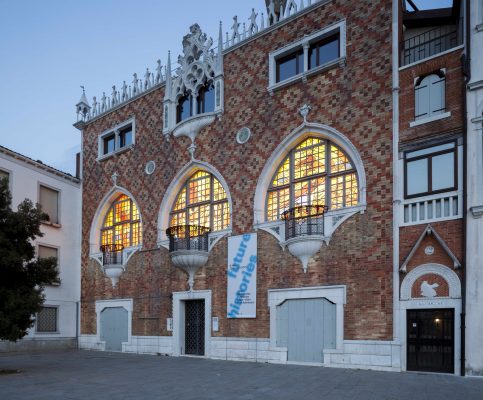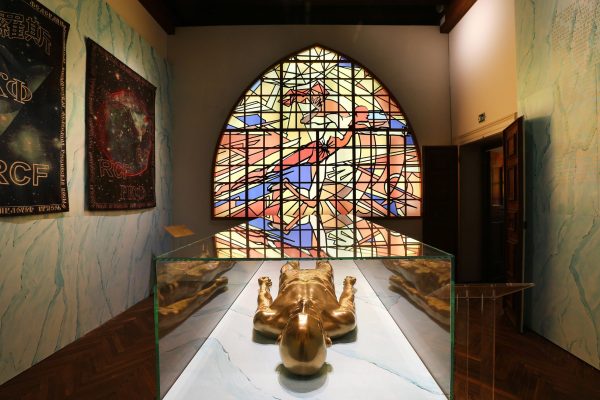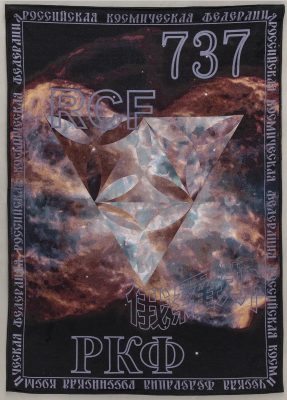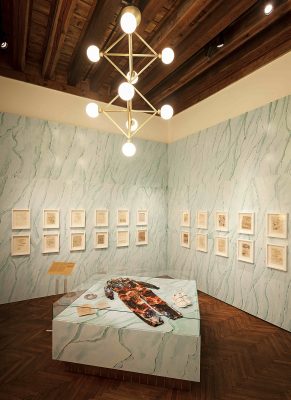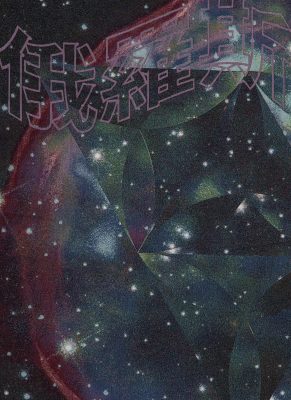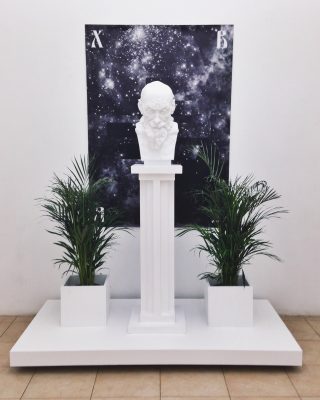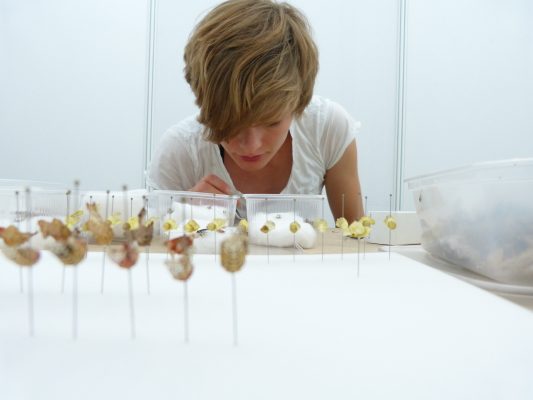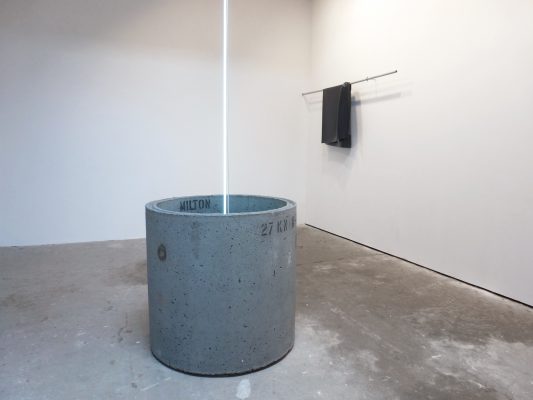I decide to drop by Arseny Zhilyaev’s workshop at Garage Museum of Contemporary Art in Moscow last November, only to find that instead of sitting quietly in the corner and listening to presentations, I am expected to assume the role of artist myself. Along with my new-found colleagues, I am to make art as part of a role-playing game set in the Russian Cosmic Federation of the near future. By this point in human history, all art is created by AI, but man’s input is still required to advance the performance of machines. What we produce is to be evaluated by an assistant curator at Garage, and Zhilyaev himself, who will decide which of us is to represent the Russian Cosmic Federation at an Intergalactic Biennale.
I am nervous before the game starts, and bubble with excitement as everyone around me transforms into inhabitants of a post-futurist art world. But I get prematurely bored after the first two rounds of producing concepts as a member of the collective, Experimental Zombie Formalism. Turns out the art world’s grip on creative freedom can feel suffocating, even in the future. In response, my comrades and I go on strike, organize an alternative (and highly irreverent) annual biennale, and end up establishing a cult, of which I am the chief goddess. Fictional CEO of a fictional cult, with a divine status acknowledged by a board of devoted disciples – not the worst outcome for a struggling artist in a precarious sci-fi future. My brief period of art making, however, does not bring me intergalactic institutional recognition, nor does my work make it into planetary collections. I shall perish, nameless and forgotten, as my body dissolves into the ether.
Zhilyaev’s work – a mixture of installation, fiction, archival research, publishing, and most recently role-play games – combines Russian cosmist philosophy with a vision of a dystopian soon-to-come. The philosophy of cosmism – a mind-boggling combination of science, technology, and spirituality – was originally dreamed up by the nineteenth-century Russian thinker Nikolai Fedorov. Fedorov advocated for immortality, and the resurrection of all human beings, proposing that our ever-extending species populate other planets. In this new phase of our existence, the museum was to play a special role, serving as a depository of historical knowledge, including a full account of every person who has ever lived.
Zhilyaev’s fascination with theories of the future and cosmism has taken him to various places: his native town Voronezh in Russia, where he organised his first exhibition on the topic in 2014; Princeton’s Cosmism, a Superhumanity symposium last December; and Berlin’s Haus der Kulturen der Welt (HKW), where he took part in the exhibition Art Without Death: Russian Cosmism, in 2017.
The doctrine of immortality, all-brotherly love and interplanetary travel captured the minds of numerous artists, writers and scientists in early Soviet Russia, most notably inspiring the exploration of outer space. Today, it retains its magnetic pull. Cosmism’s idealism may be ludicrous and outlandish. It also makes it totally irresistible in our wobbly times.
